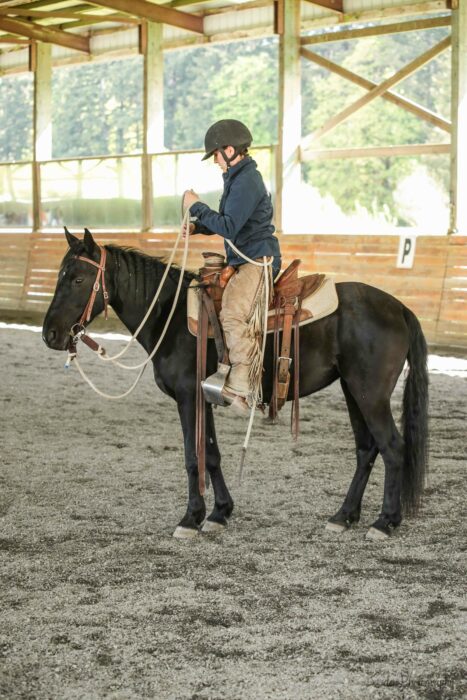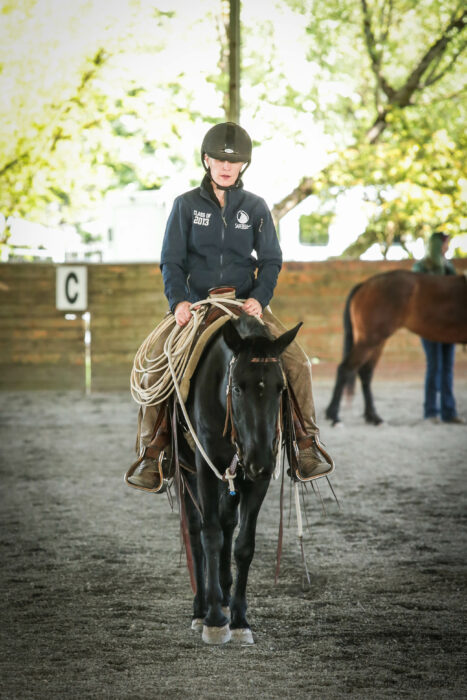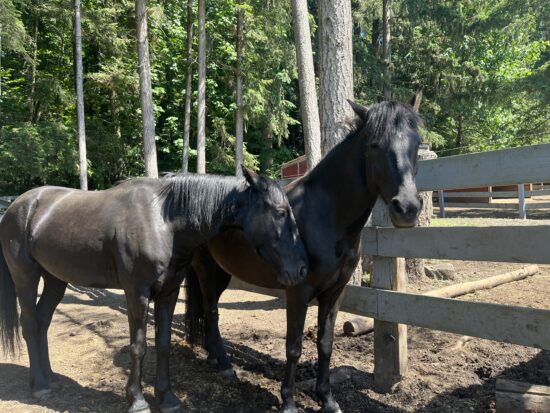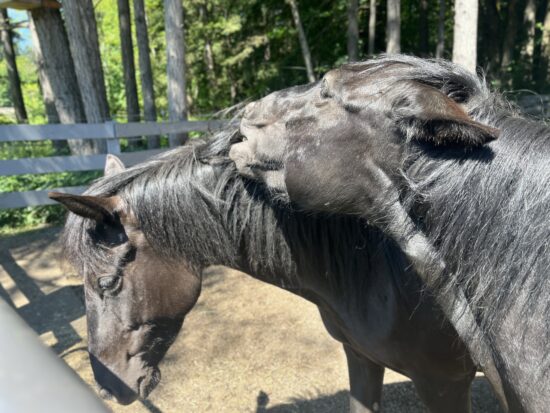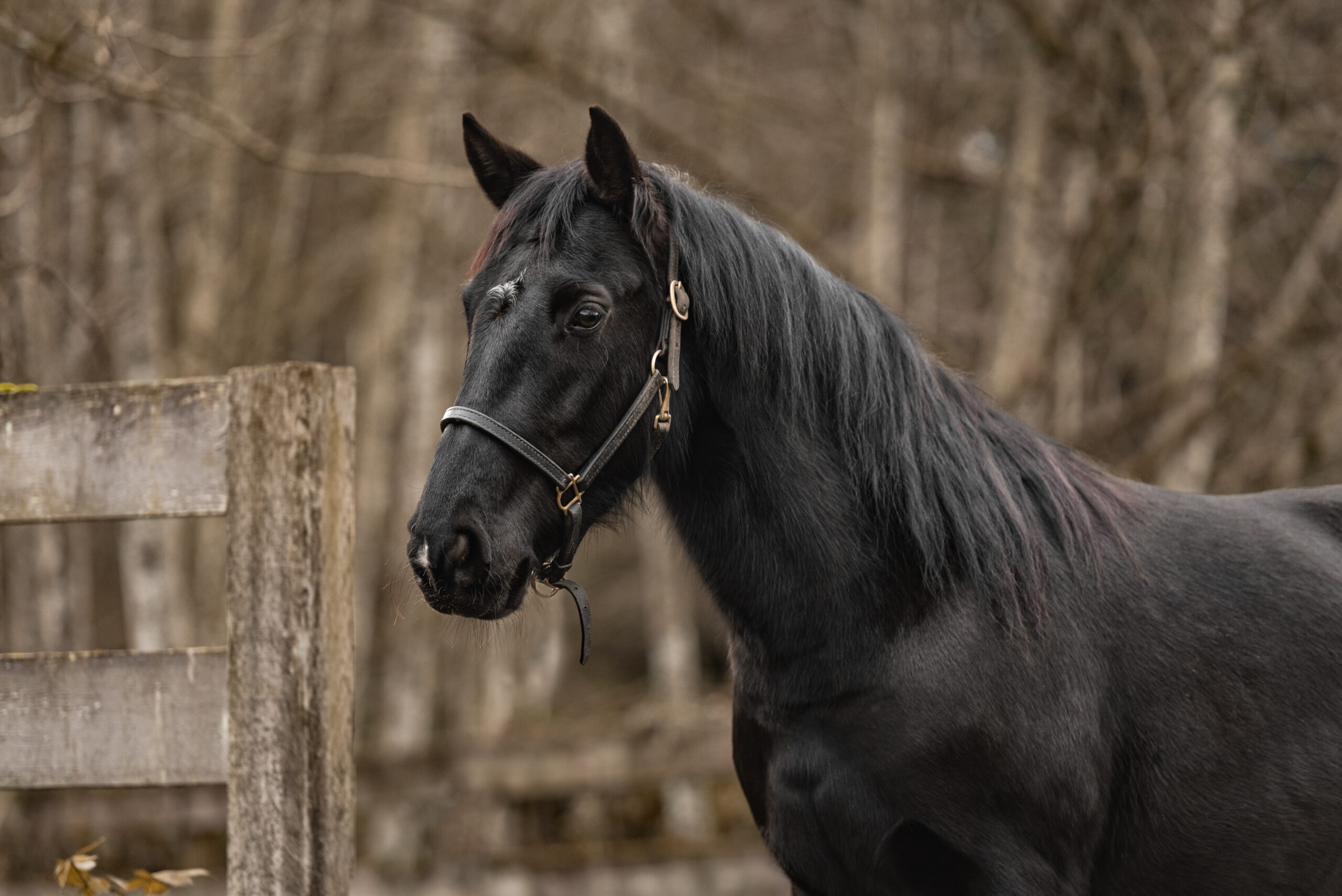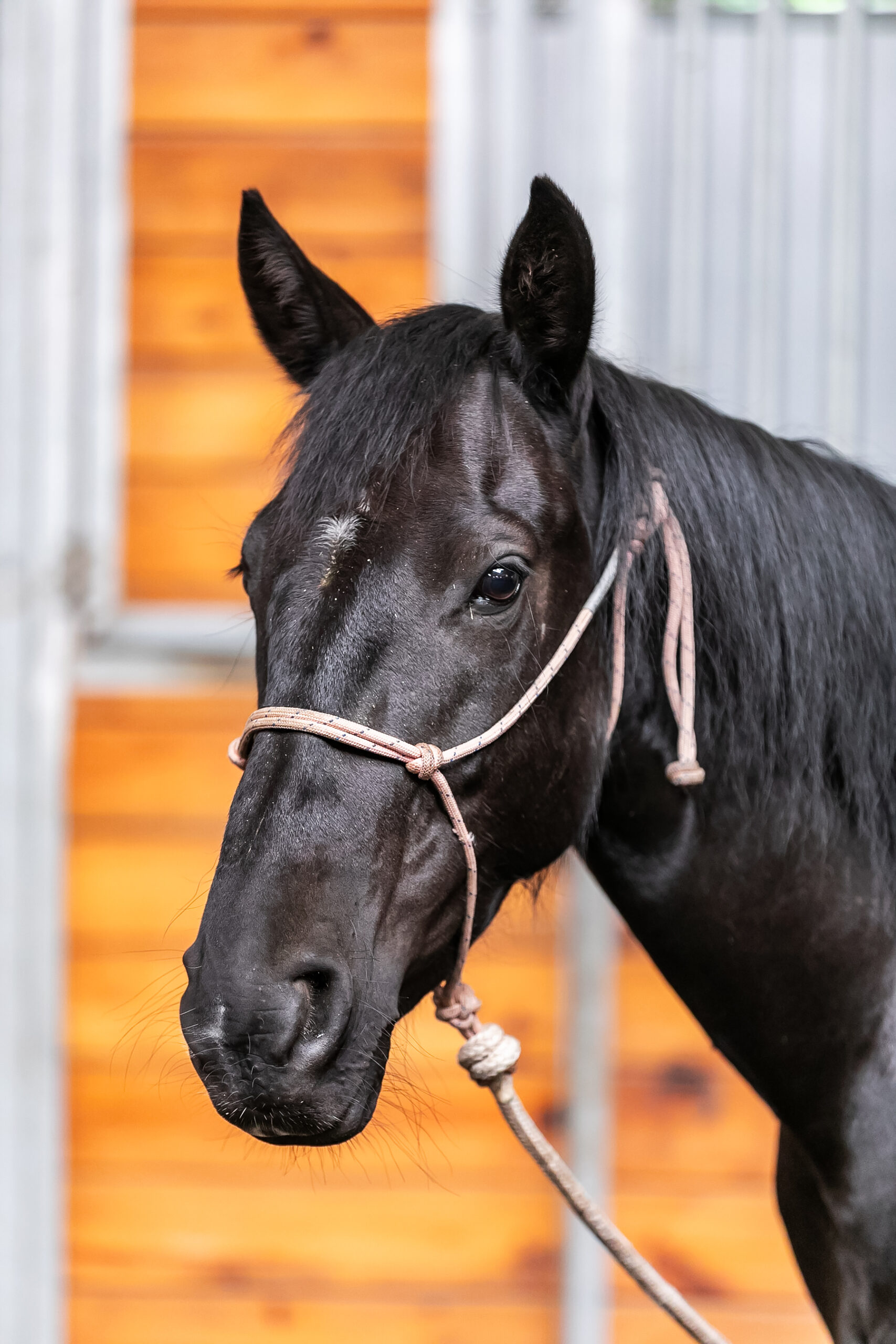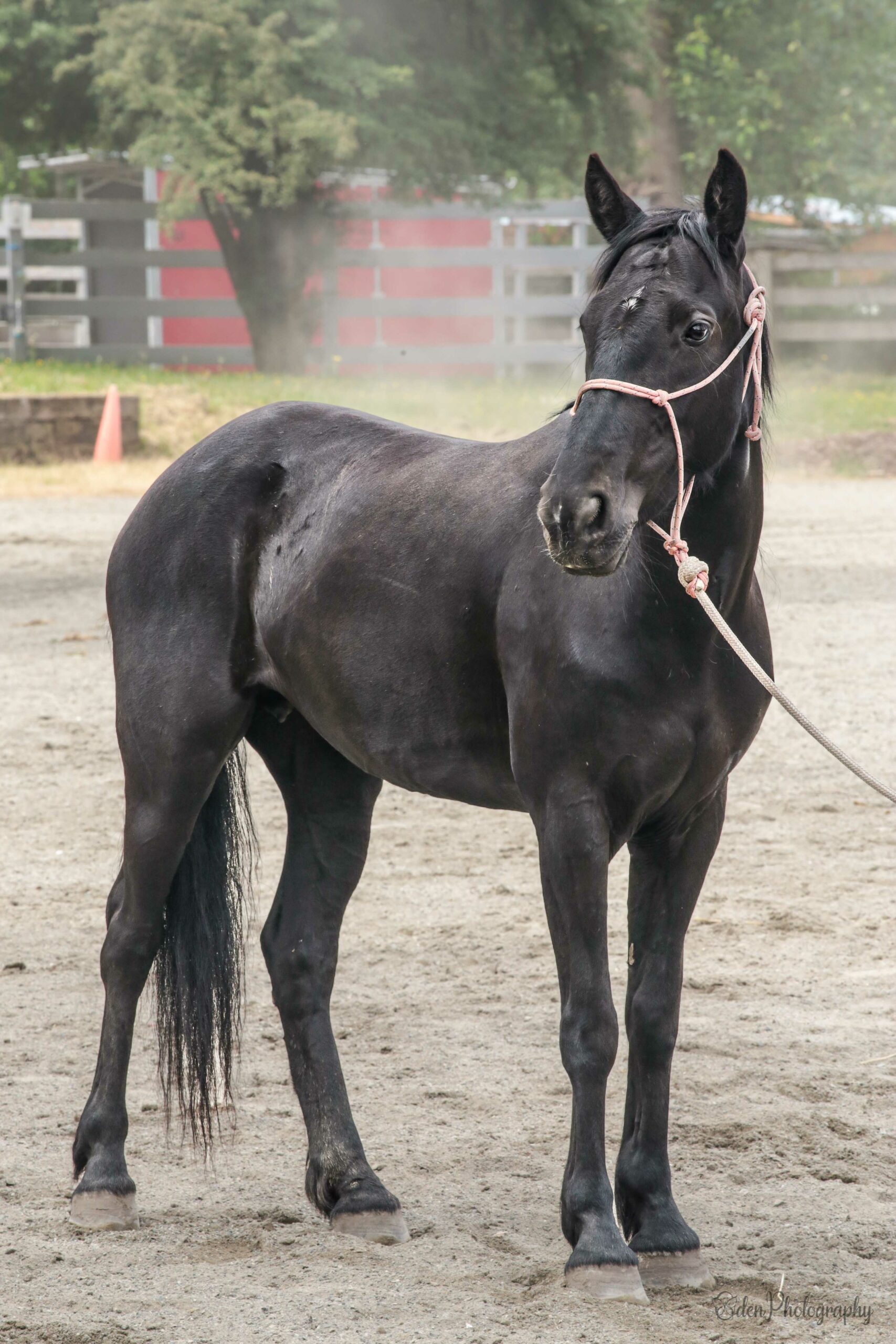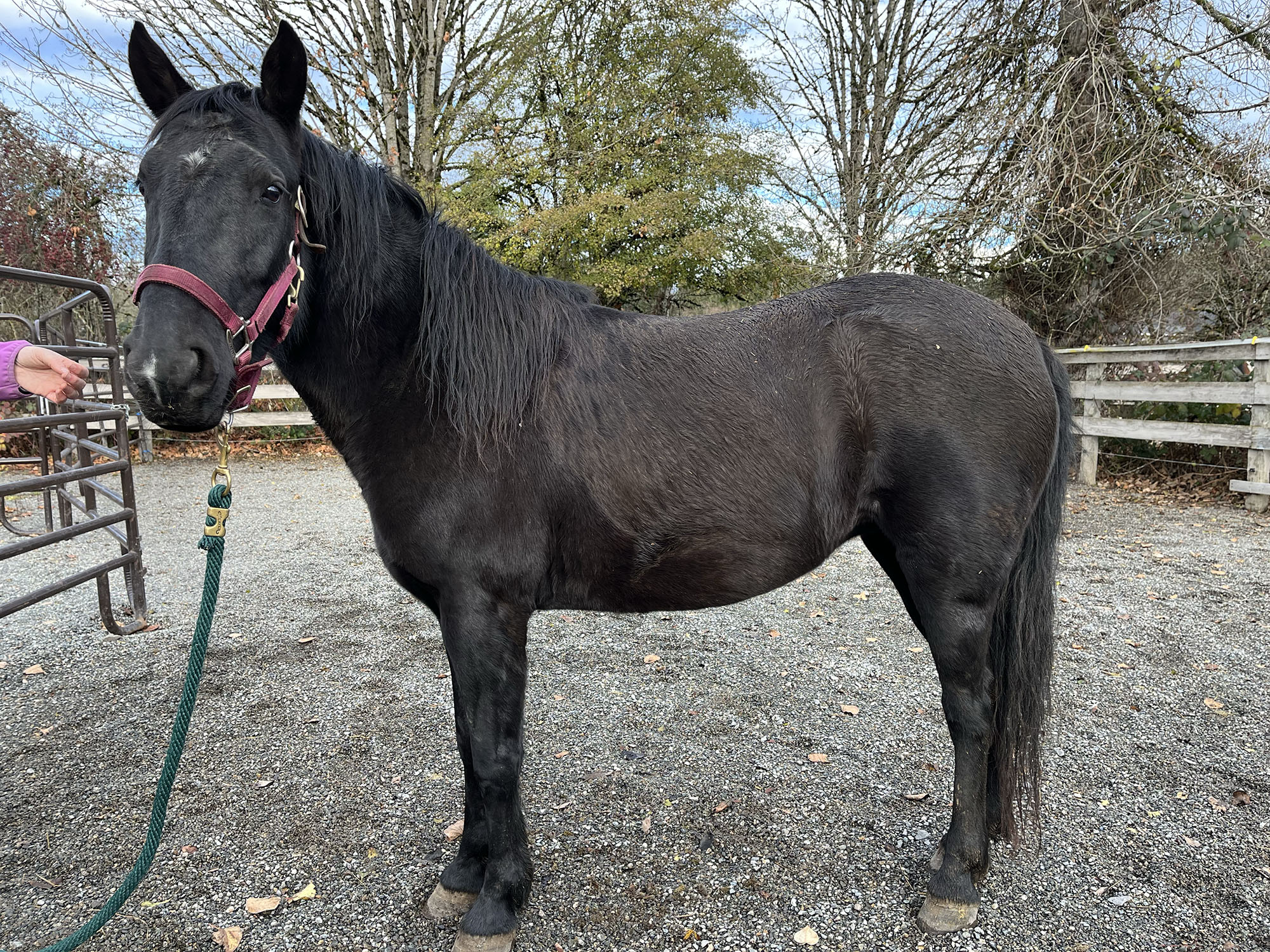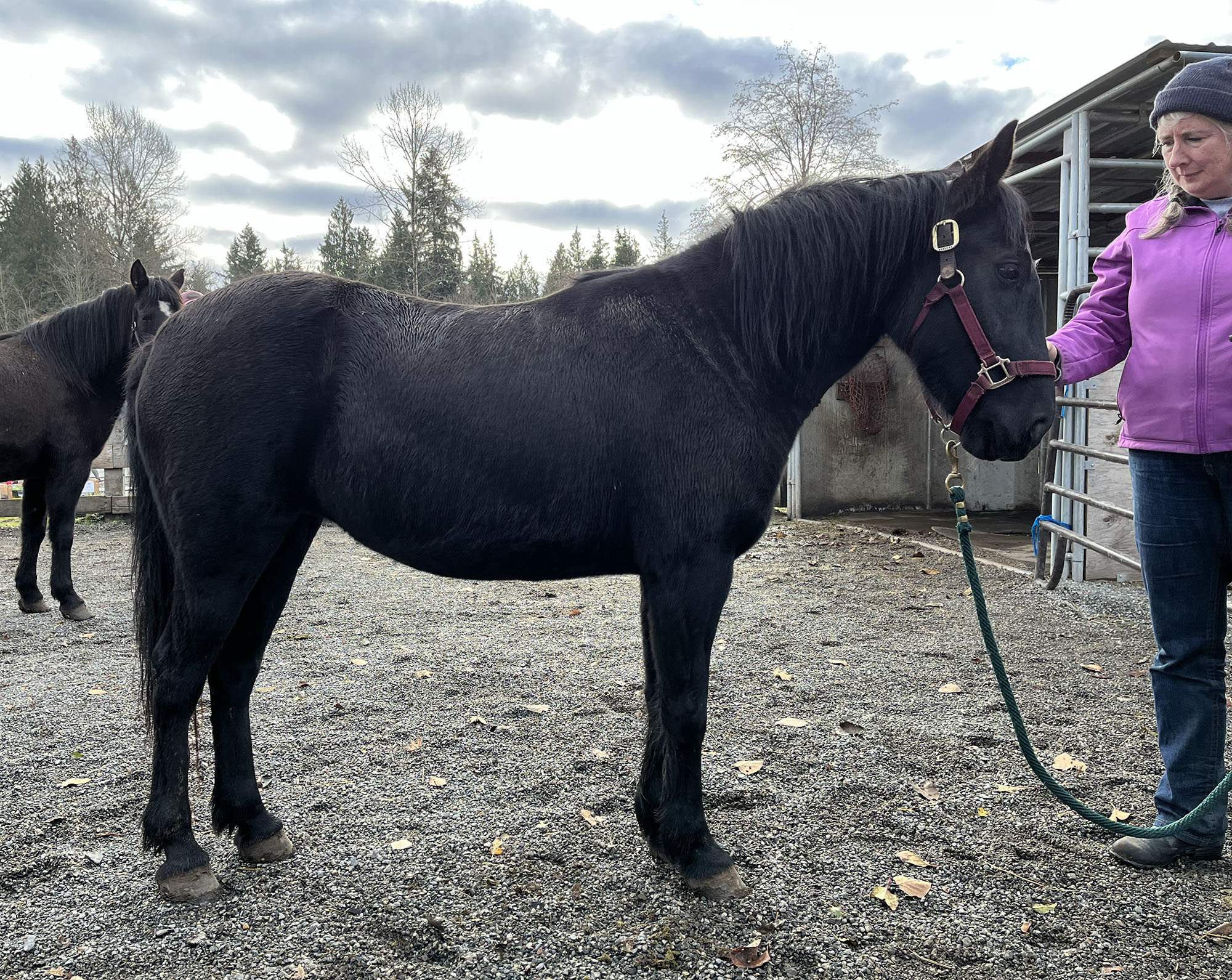Poppy
2017 pony mare
Suitability: For Intermediate Rider
Color: black
Markings: star and snip
Height: 13 hh
Weight: 821 lbs
Adoption Fee: $3000 (Will increase with training)
Online Adoption Application
Poppy came to SAFE in November of 2022 as part of a seizure of 27 horses from Pierce County (who we called The Graham 27).
At first glance, Poppy’s small stature may make you think she is closer to a yearling than a girl of 6, but she is merely of delicate build. But don’t let her size fool you, she is the definition of small but mighty. We do not believe she was started under saddle before arriving at SAFE, and while she was certainly in need of a fair bit of groundwork to help her through some troubled spots upon arrival, Poppy has now been under saddle for several months and is coming along great!
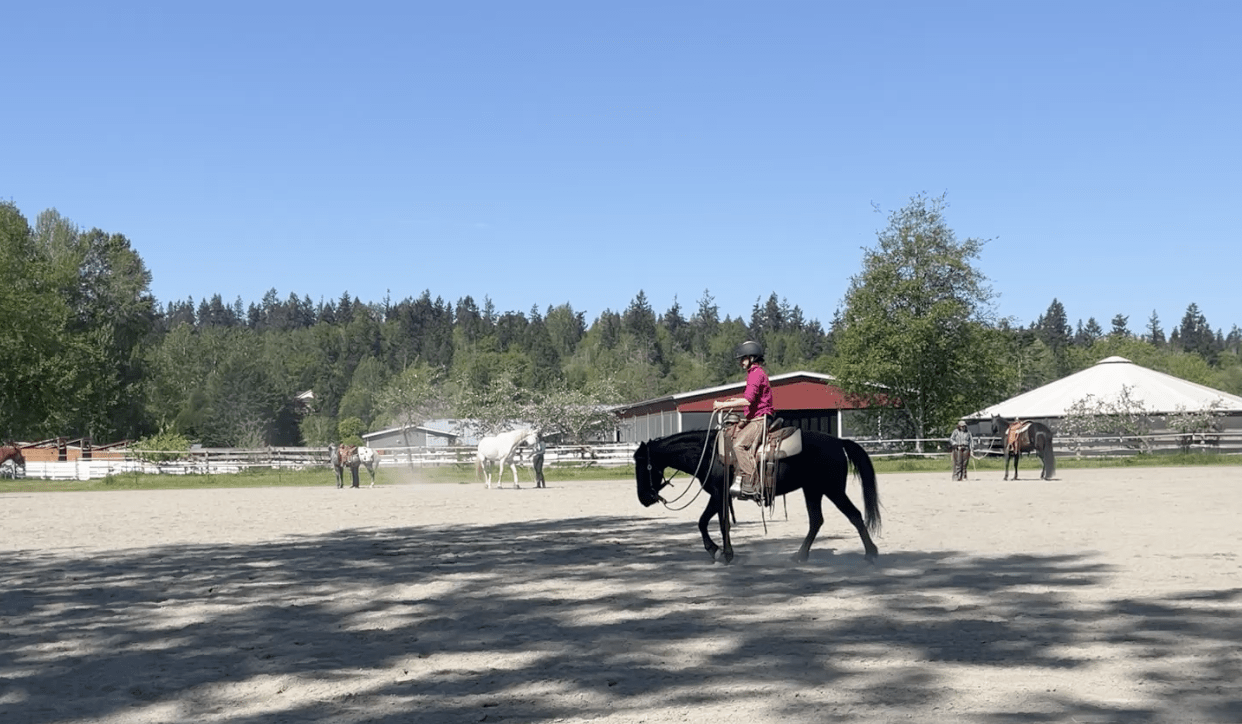
Poppy in May
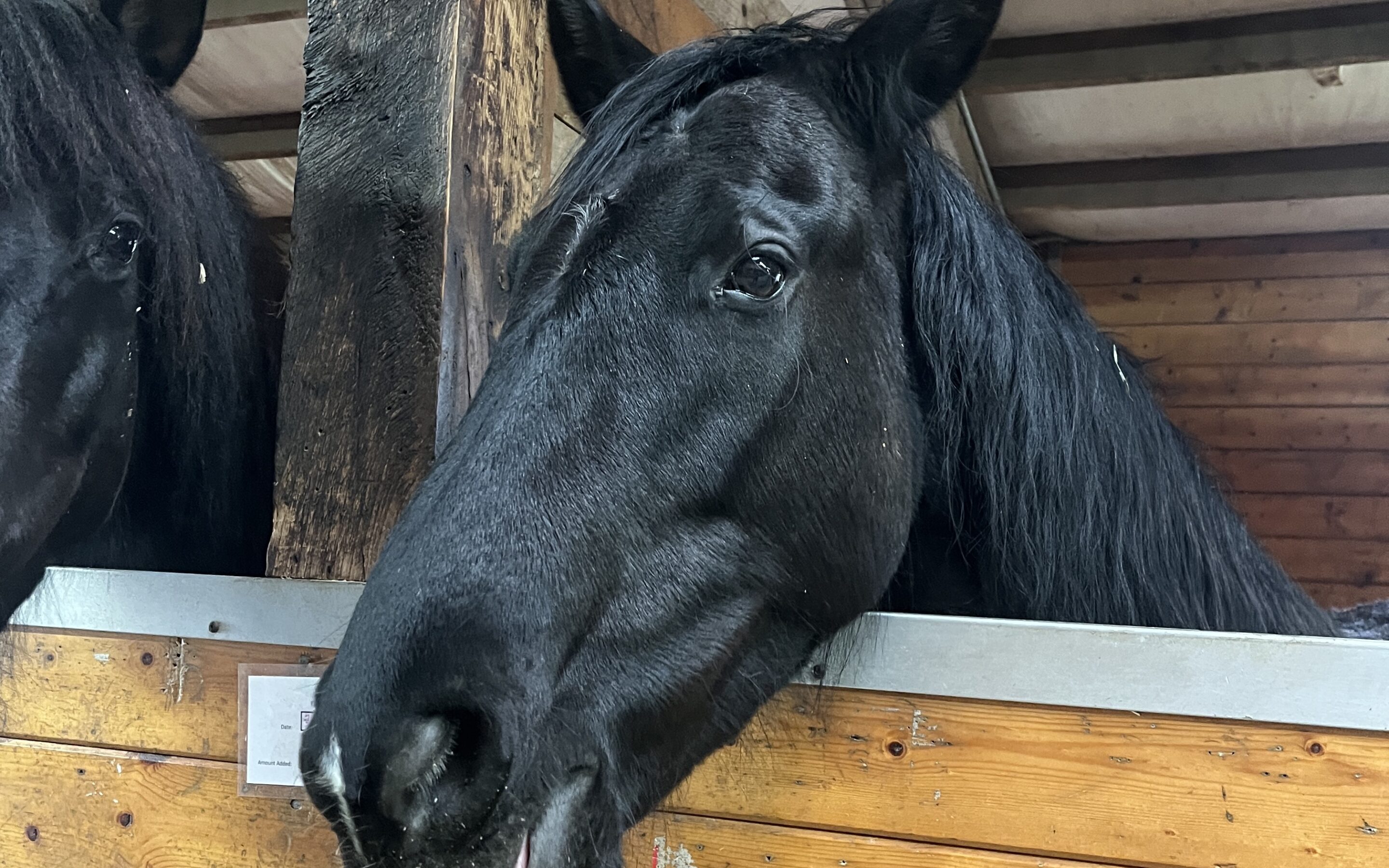
Why We Love Her: Poppy
Casey has been working with Poppy for quite a while, and has the following to say about little Poppy:
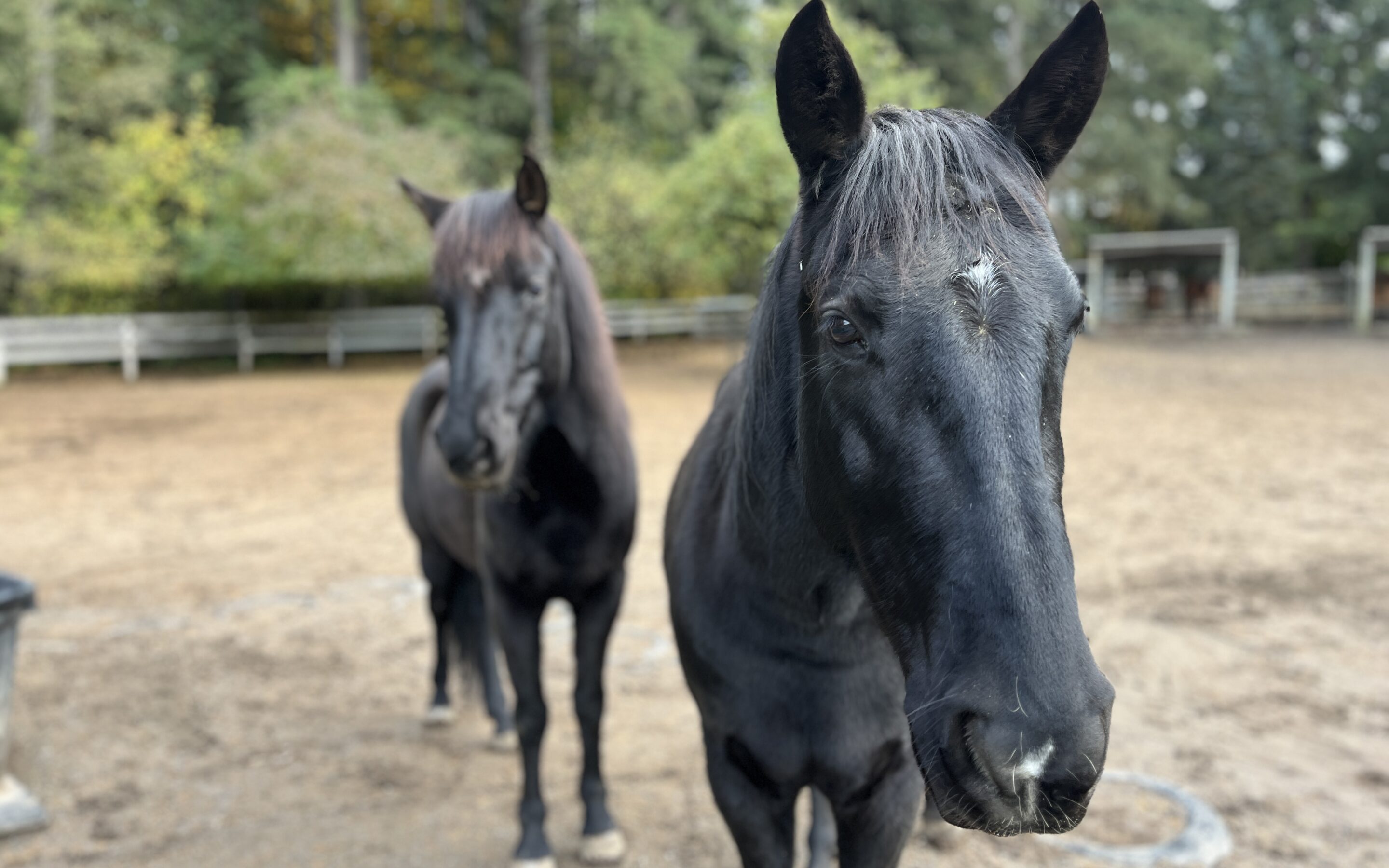
Movin’ and Groovin’ with Poppy
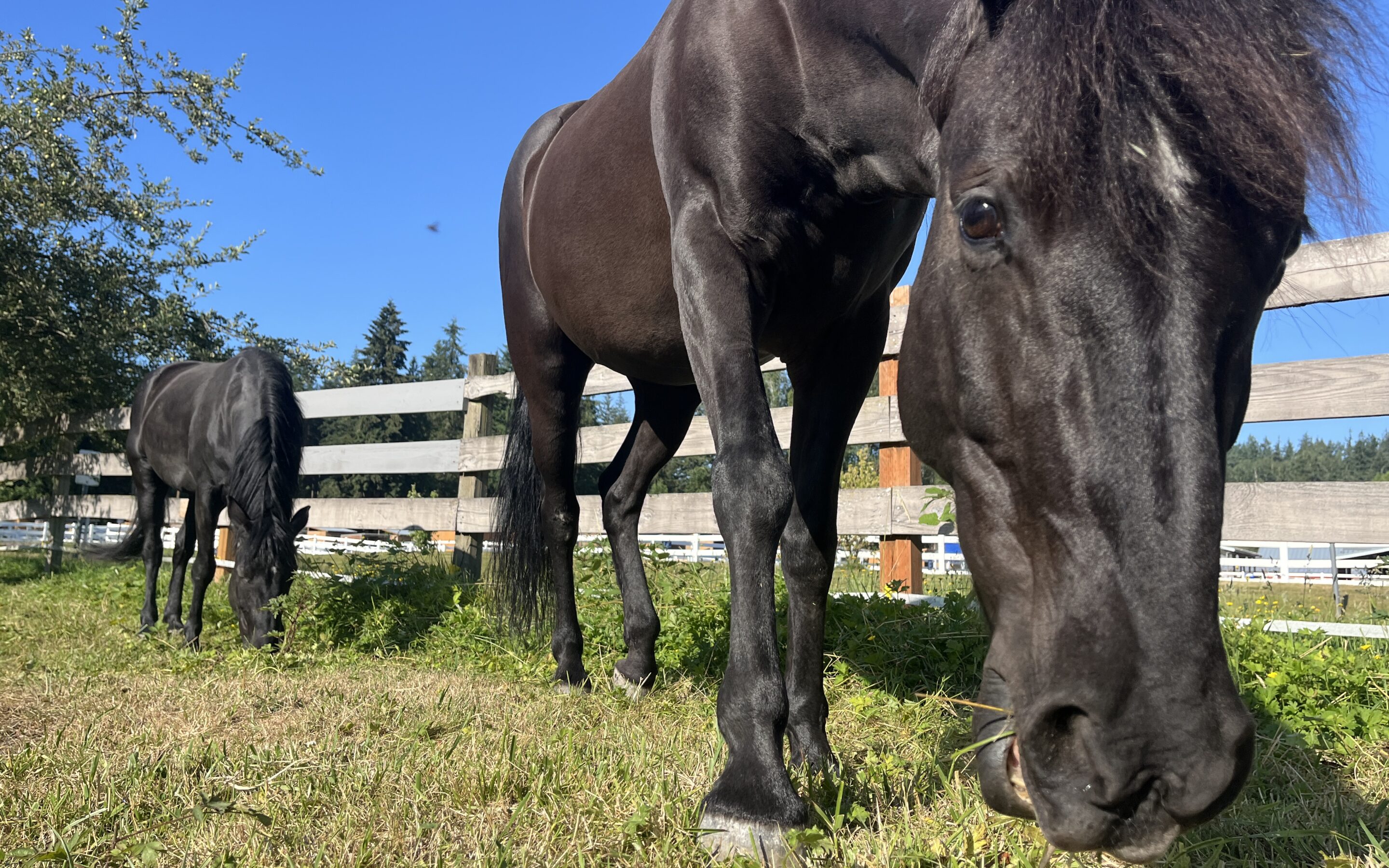
Poppy and Moshi and the Brush Cutter
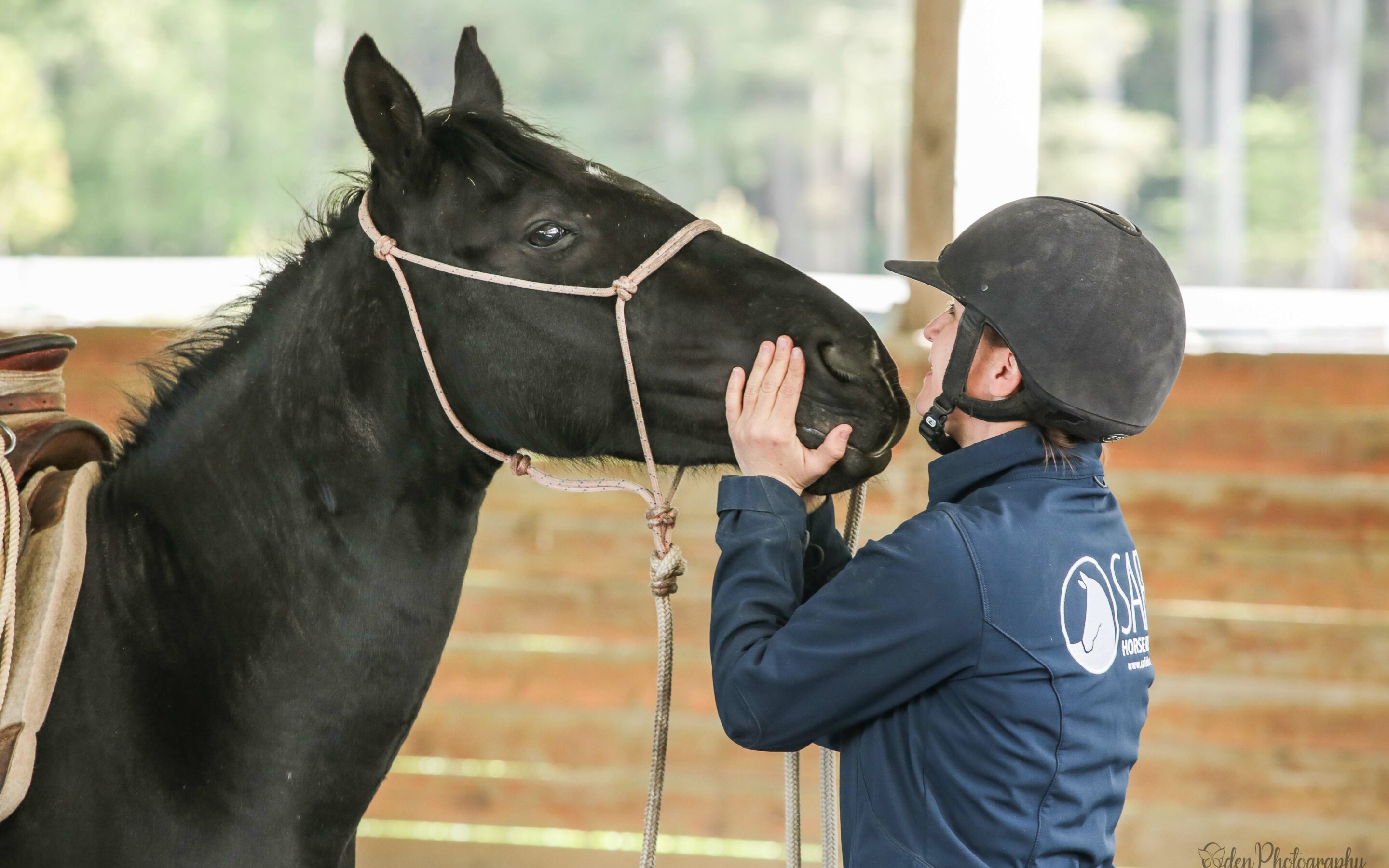
Progressing with Poppy
Casey A has been riding and working Poppy for some months now, and speaks about her experience riding Poppy out in the big arena amongst other horses during the recent Joel Conner clinic:
“Poppy has come a long way from the defensive, stoved up pony who would strike at people, and charge at other horses with ears pinned and teeth bared. That armor is being shed as she gains confidence in herself, and the ability of humans to support her. I’ve ridden her in a big group twice now. The first time I felt a hint of discomfort from her, and a propensity to want to kick when others got near. I was able to keep her out of trouble, but it wouldn’t have taken much for things to go sideways. However, there was a marked difference the second opportunity I had to ride her around others. She was much more comfortable, and I didn’t feel any defensiveness. We wove in and out of traffic, and she stayed with me, remaining unconcerned with the horses around us. Lately, I’ve felt a definite shift as she feels like she is turning loose and looking to me for guidance. However, she still feels green, and requires an advanced rider. I’ll continue to work on getting her balanced and following my line and, with that work, I suspect that in the coming months she’ll start being better suited to a wider range of abilities.”
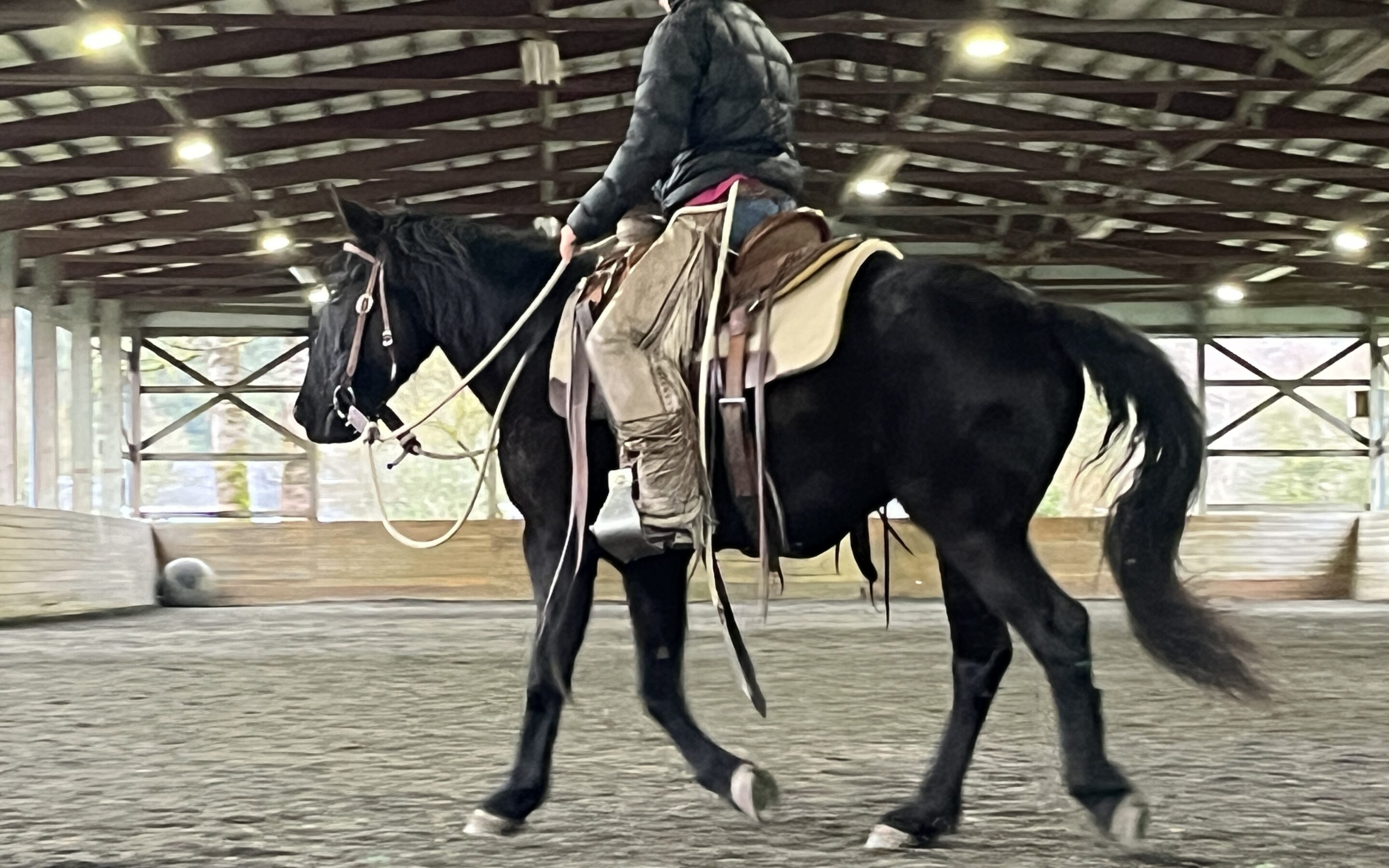
Poppy in the Arena
Each horse at SAFE has a different timeline when it comes to getting where they’re going — be it to live out their days as a companion or to wear a saddle and carry a rider — but for the most part, the milestones they complete and the skills they learn are standardized across the board. They all learn how to lead politely, how to have their feet handled, what it feels like to wear a blanket. For some, that is really the most that will be expected of them. But for those joining the ranks of our riding program, the checklist is a little longer. The aforementioned basics lay some of the foundation of their education, but there is an entirely separate list of skills riding horses must learn. For this group, the list includes learning to ride outside of the confines of a round pen. This is a multi-faceted exercise for the horse — not only is the space much larger, but they must be able to follow a line and have a good one-rein stop, among other things. Essentially, their level of education must be at a point where they can take both comfort and direction from their rider reliably.
Poppy has recently reached this point. More often than not these days, she rides in the arena more than in the round pen, and is doing very well at following both a line and a feel. Take a look at one of her more recent rides below:
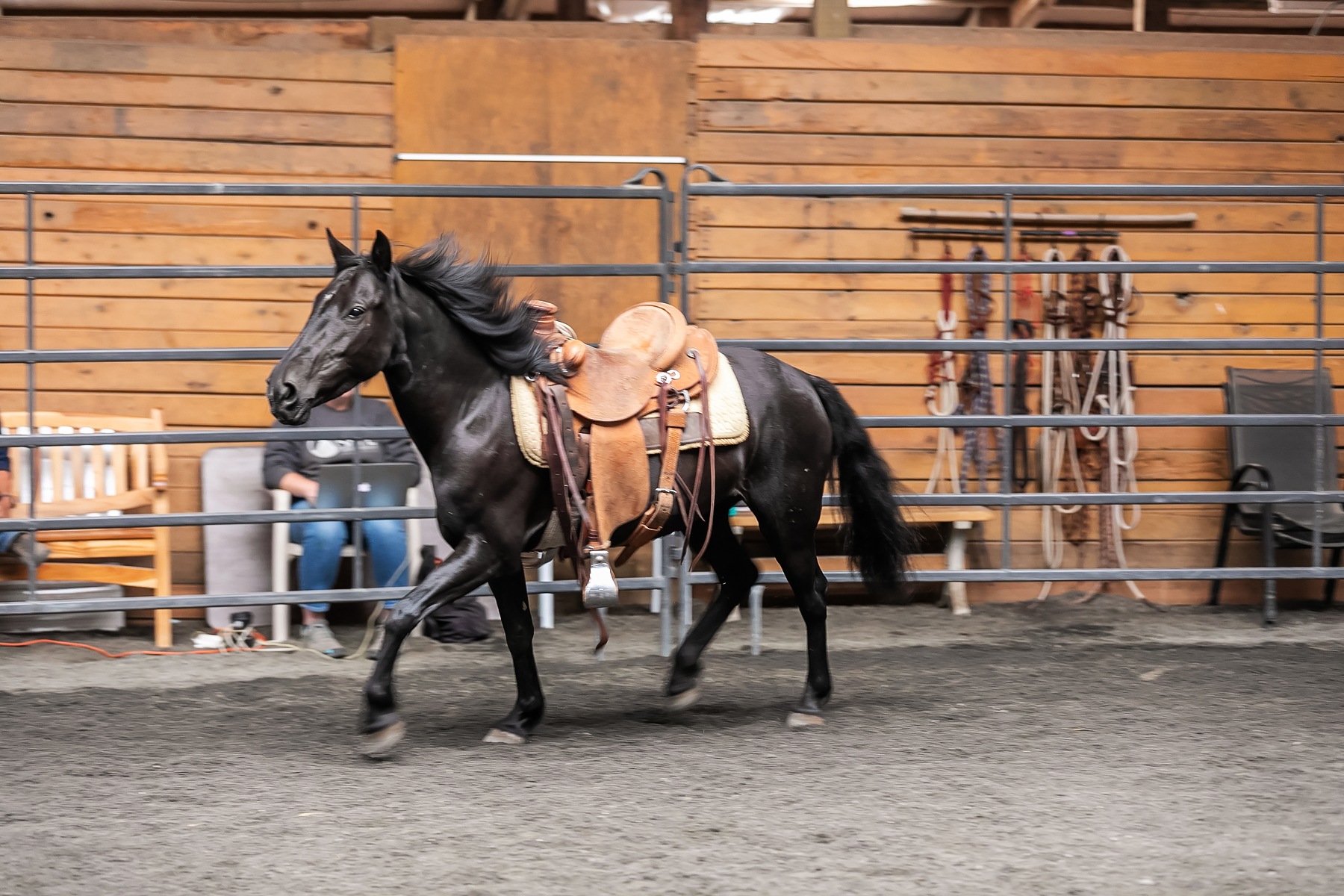
Poppy for Adoption
If Poppy arrived at SAFE as a flower, it was as the first little green tendrils that come poking up through the dirt. Poppy was the shy little shadow to her near-twin Moshi, evasive about being caught and touchy about being handled. She had a bit more trouble to work through than the majority of her Graham counterparts, and unlike a fair number of them, had no experience under saddle. But like any flower, when given time to grow and conditions to thrive, Poppy blossomed. Just over a year after her arrival here at SAFE, we are excited to say that Poppy is available for adoption!
At 13 hands, Poppy is more bud than flower, but haven’t you heard that big things come in small packages? Besides, there is a certain school of thought (namely mine) that feels like the inherent risk of horseback riding becomes a bit less so when you’re closer to the ground.
Poppy is still a green horse, and therefore in need of a rider with experience working with helping a horse continue their education. She still has some learning to do, but is going well walk/trot/lope, and since her start under saddle, has been of solid mind (and has kept all four feet on the ground!)
Don’t let her ear position fool you — while we often joke that Poppy’s human equivalent would be an angsty teenager given her expression, this mare is sweet on the ground and quite easy to handle. She does well for the farrier and the vet, and will tie patiently. Another benefit of her small stature — cute, pony-sized blankets to dress her up in!
Check out this video of one of Poppy’s more recent rides, and consider coming to meet Poppy and maybe taking her home.
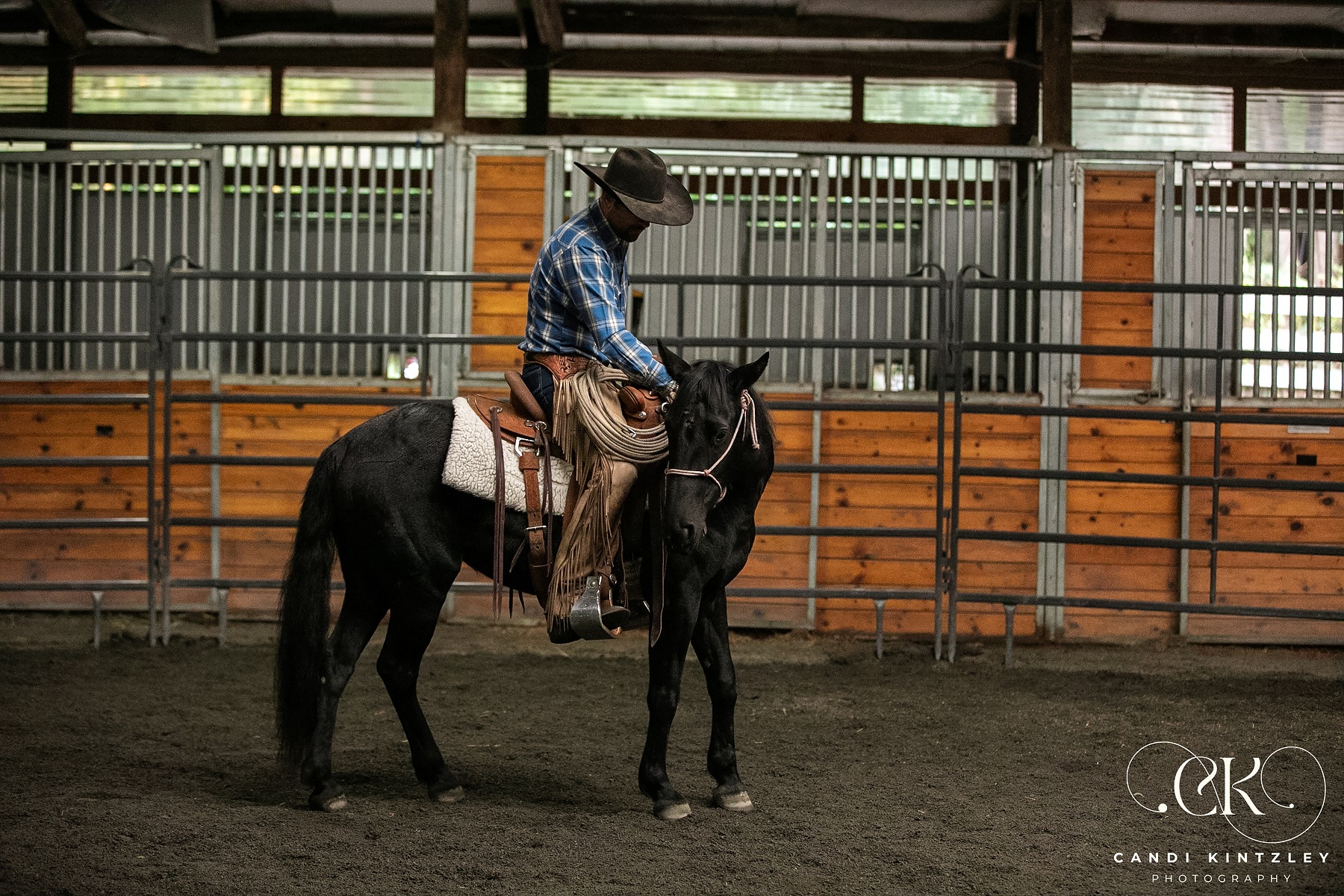
Poppy’s First Ride!
Poppy is a great example of how well-preparedness leads directly to a horse’s success. After a somewhat tumultuous first cinching, we realized that Poppy would need a bit more work to get her comfortable with the process, and stepped back a bit to better get her ready. After just a few days of stopping her by a hind foot, working more on tossing the saddle up, and continued work with the flag, Poppy realized that the saddle wasn’t a monster come to eat her, and her second time cinching was, if not a walk in the park, then a light jog.
From then, her groundwork continued under saddle — lots of it. All the same things we’d been doing before, but now with the added element of being cinched up. She learned some cute little tricks during this time, including bumping herself up to the rail (I say trick only because she picked it up so quickly after working on it). We flagged her from above on the rail, threw the rope over her back, and sat on her from the panels, all things to ensure a successful first ride. And successful it was! Poppy had a good understanding of what was being asked of her, and didn’t try any feats of acrobatics.
Her first few rides mostly involved helping her gain an understanding of feel — there was a part of the arena where she was mostly drawn to, and a part that she wanted to rush by. Joel spent the first rides working on getting her to understand what he was asking, and using the “wrong thing difficult (but not impossible), right thing easy” approach. When Poppy would enter into the part of the arena she already wanted to stop, Joel would encourage her forward, but as soon as she turned towards the area she wanted to avoid, he would sit and pet her. It took Poppy a few spins around the roundpen, but she caught on quickly, and was soon seeking out the part of the arena she’d previously avoided, knowing that it meant a break. The next day, she understood much faster what was being asked, and it took her hardly any time at all to find the spot that had felt so peaceful the day prior.
Check out the video of Poppy’s first ride below!
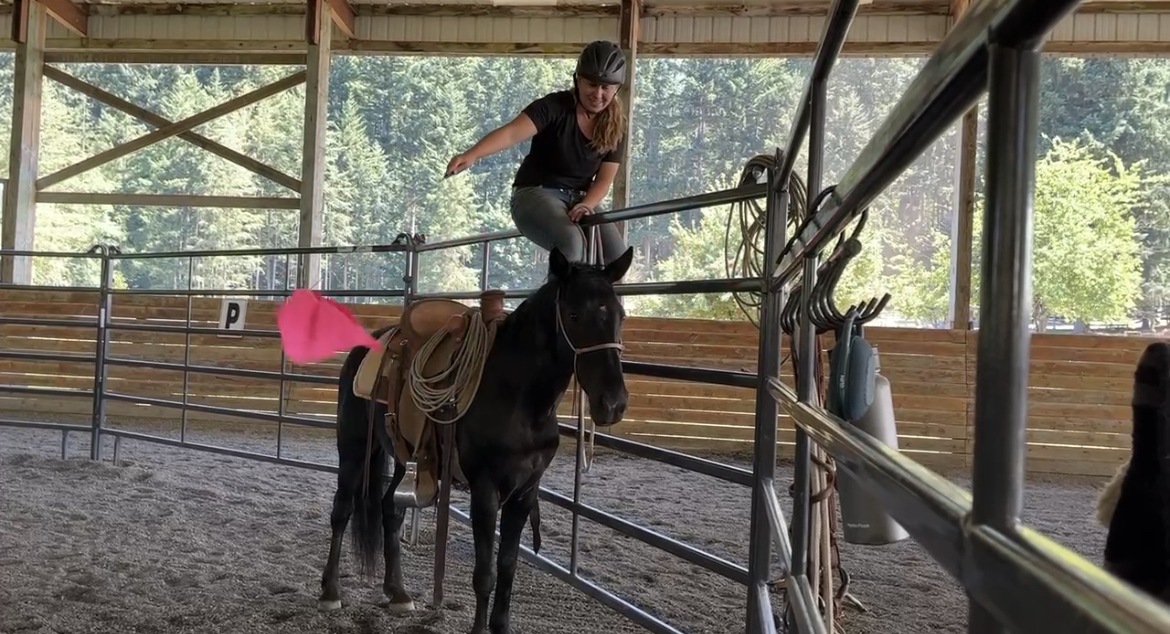
Flagging Poppy on the Rail
For Poppy these days, wearing a saddle is no big deal. Nor are many of the things that once bothered her — being touched with a flag, or a rope. She has made huge strides, but there is still prep work to do when it comes to readying Poppy for a rider. One thing we do to help horses adjust to having something, someone, above them is to.. well, get above them. We practice this by bumping them up to the rail, a trick Poppy picked up quickly, and then working up to waving a flag overhead, by their sides, behind them. We do the same with a rope, going so far as to throw a loop across their backs and coil it back up. Though many of our horses will never work a cow, playing at roping off of them helps get them ready for just another set of environmental variables.
Here you can see Terry doing all of the above to help Poppy get used to stimuli around and above her. And as you can also see, the prep-work has really paid off — Poppy is hardly bothered by the various flaps and flops of the flag and rope. Terry ends their session by “sitting” on Poppy to get her used to an actual person in the saddle, as well as the added weight. In this sit, Terry is still committed fully to the panel, so if Poppy were to start to leave, she could easily pull herself off the horse. But, spoiler alert, Poppy handles this final bit the same way she did all the rest: without very much reaction at all.
Poppy has come a long way, and continues to grow in her confidence by the day!
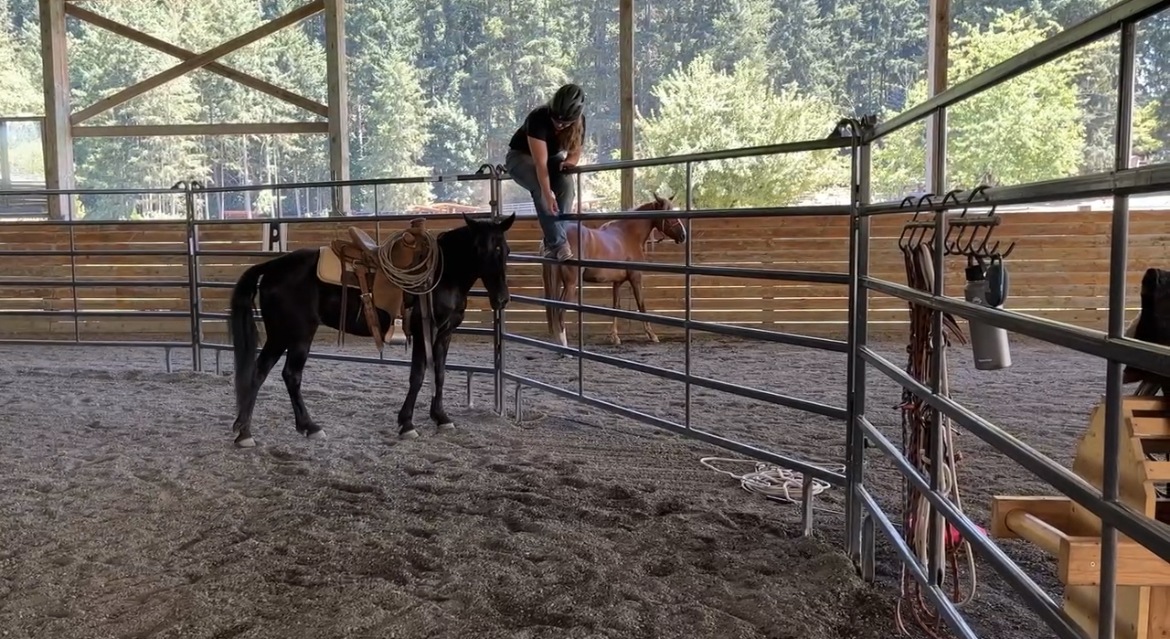
Poppy’s Cool Trick
No, you didn’t miss a chapter: Poppy wears a saddle now. More on that story and process later. But in the meantime, please enjoy this fun little “trick” she learned during the course of her training.
This is one smart cookie of a mare. Believe it or not, this was perhaps the fourth or fifth time only performing this exercise — including the times she was actually on a line!
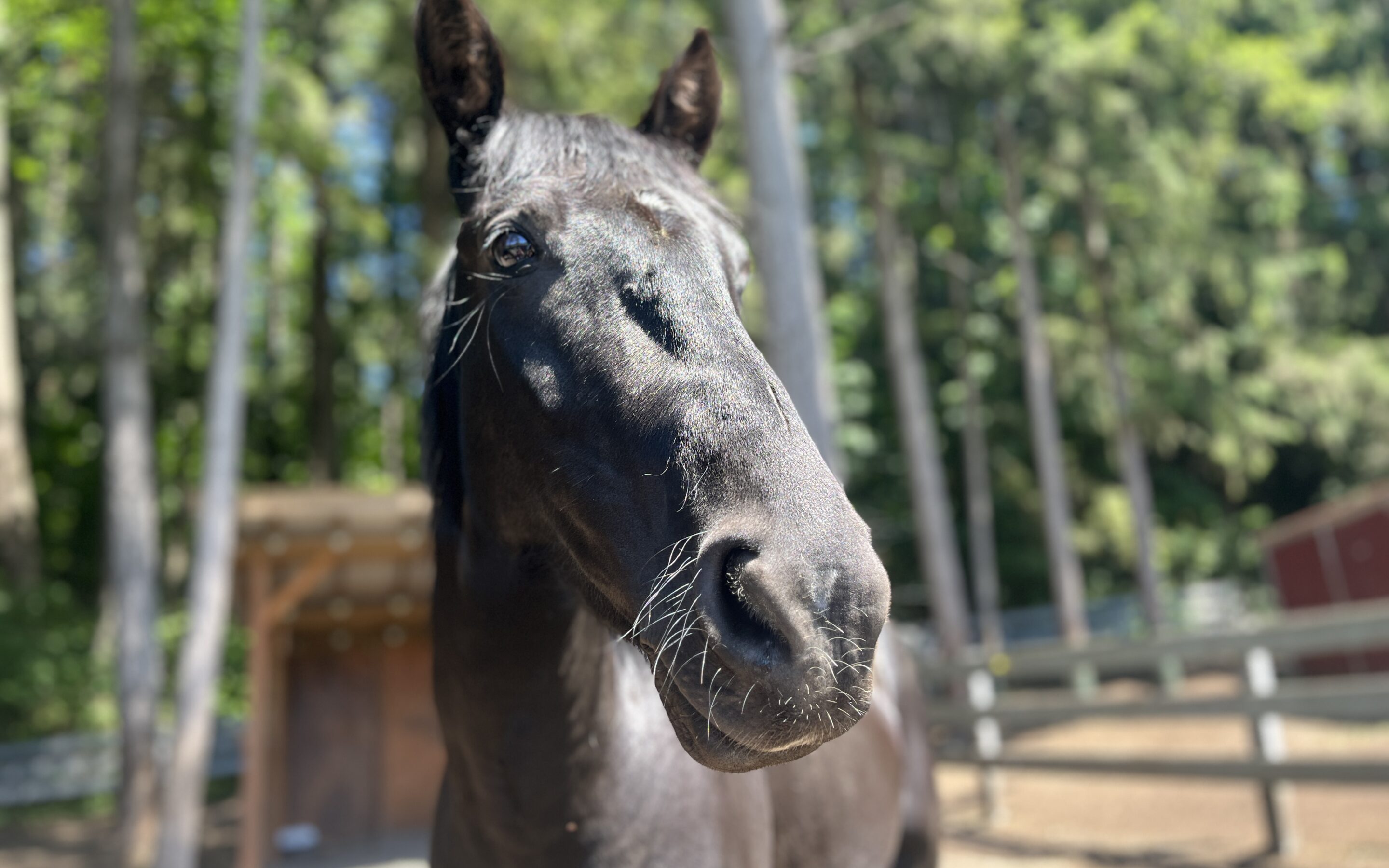
Paw-ppy
Horses have a remarkable field of vision, able to see about 350 degrees around them. Each eye can work independently of the other, which makes sense – horses, prey animals by nature, have the best chance of survival if they can scope out almost the entirety of their surroundings at any given time. In our horsemanship, we talk a lot about ‘turning loose’ to an eye, which essentially means helping the horse learn that they are able to move their feet into an area that their vision may be obstructed in. A similar concept also applies to a horse’s blind spot areas, especially the one below their chin. This is a dangerous spot for a horse to feel insecure about, for even with a horse who seems perfectly gentle, an issue with things in their blind spots could be potentially tragic for someone casually ducking under their neck to switch sides, or a dog or child getting a little too close underfoot.
In this video, Joel works with Poppy on that blind spot issue. It is important that a horse learns to respond, not react, to a stimuli in their blind spot, both for their own empowerment and for the safety of those around them. The first times Joel touched Poppy with the flag, she struck out as soon as it entered the zone under her chin, rearing and pawing. A defensive behavior on her end, but you can understand how it could be dangerous for those around her. It took a lot of work for Poppy to begin to realize that the flag wasn’t a threat, and it is still quite a work in progress. It is an unnatural thing for a horse to learn to trust that things in their blind spots aren’t going to hurt them, so for a horse like Poppy who is clearly so predisposed to feeling stressed by things outside of her field of vision, she has made some pretty immense changes. We are currently in the process of preparing Poppy to be a riding horse, and look forward to getting her as ready as possible on the ground so she has the best chance of success into her future.
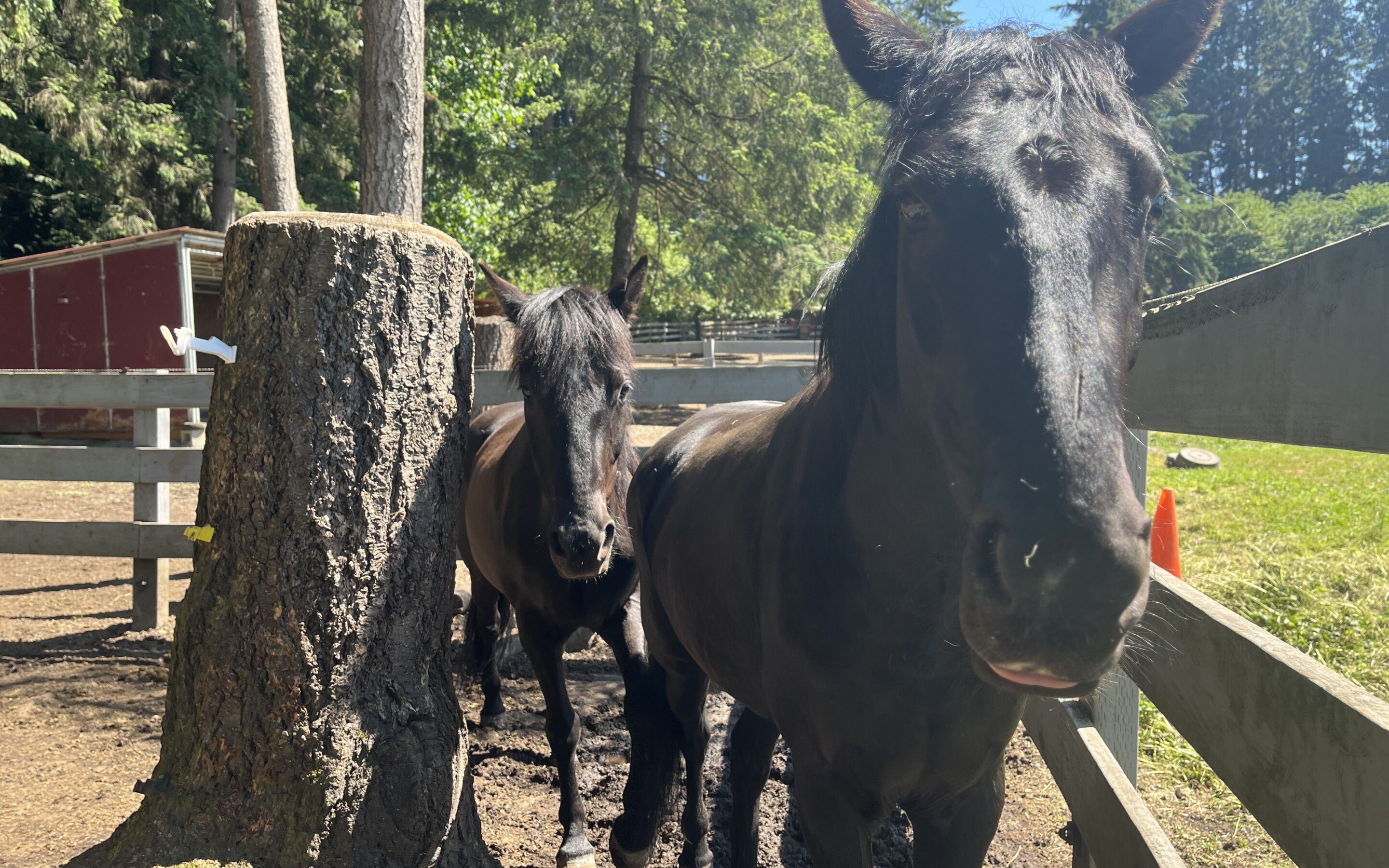
Poppy’s Playmate
If you squint, it’s hard to differentiate the two little black mares who came in together as part of the Graham 27 seizure. They’re both small of stature, both rather narrow, both almost fully black. In the shadows, it’s hard to even tell they’re there. When night check makes their rounds to feed, I can imagine on moonless nights all they see is the glint of four pairs of eyes, waiting for hay in the darkness. And it would be four pairs, two right beside each other, because these girls are never apart long. In the human world, we might call it codependent, but in the horse world, it goes by herdbound. While it is sweet to see them together, it means that if and when they are separated, the little ghouls in each of them (if we’re continuing the spooky motif) emerge, and boy howdy do they sure know how to howl.
Herdboundness is not a positive trait. At the heart of it is an inability for the horse to feel comfort away from its friends, and all the feelings and actions of insecurity that result from that. When Moshi would inevitably have to leave Poppy’s side, or vice versa, the two would hoot and holler at such an ear-shattering decibel it’s remarkable any of us still have our hearing. They had a hard time focusing on what was being asked of them in a working context, and instead would spend their time in the round pen looking frantically for their missing friend. Though they loved being together, it was clear it was ultimately to their detriment. We would have to pull them apart for training, or if one got hurt or sick, or on the day when one was adopted.
So we made the difficult, but necessary, decision to vacation them from each other for a little while. Off to opposite sides of the property they went, at first protesting quite loudly, but we were careful to watch them for any potential self-injurious behaviors.
It didn’t take them all that long to quiet down, and they both adjusted well into their new spaces with their new neighbors.
The difference was marked. When we had to bring them both into stalls, we separated them there as well, and attempted to be sneaky about walking one past the other. But we needn’t have worried – after the initial call of recognition, they both settled back into their respective areas.
And then, one afternoon, we brought them back together. We needed to consolidate paddocks, and to pair up two existing friends was the easiest choice. Their reunion was a happy one, to be sure.
But the best part of this story? Their intense herdboundness is much reduced. You can take Poppy from Moshi, or vice versa, and not see (or hear!) the other go off the rails. And they get the best of both worlds: being able to enjoy each other’s company and still feel secure in themselves and the support they get from the humans who are interacting with them. Sometimes, distance really does make the heart grow – if not fonder, then definitely stronger.
- Even the best of friends fight sometimes!
Training Update: Poppy moving on the Wall
Little Poppy is hard at work in our horsemanship program, learning all sorts of new tricks. Because she has likely never been saddled before, we are putting her through all the paces with that as our first major goal, but we are working on other aspects of a well-rounded horse’s education as well. In the below video, Terry works Poppy as though she is tied (she is NOT tied, I want to reiterate over and over again to assure you, we would never tie a horse to panels), moving her hind back and forth and having her change eyes on both Terry and the flag. This is great preparation for actually tying Poppy, as it teaches her how to move her feet if she gets bothered while tied, that moving laterally is the correct response, not pulling back. Terry also handles her feet while she is “tied,” and Poppy is a very good girl about giving all four of them willingly.
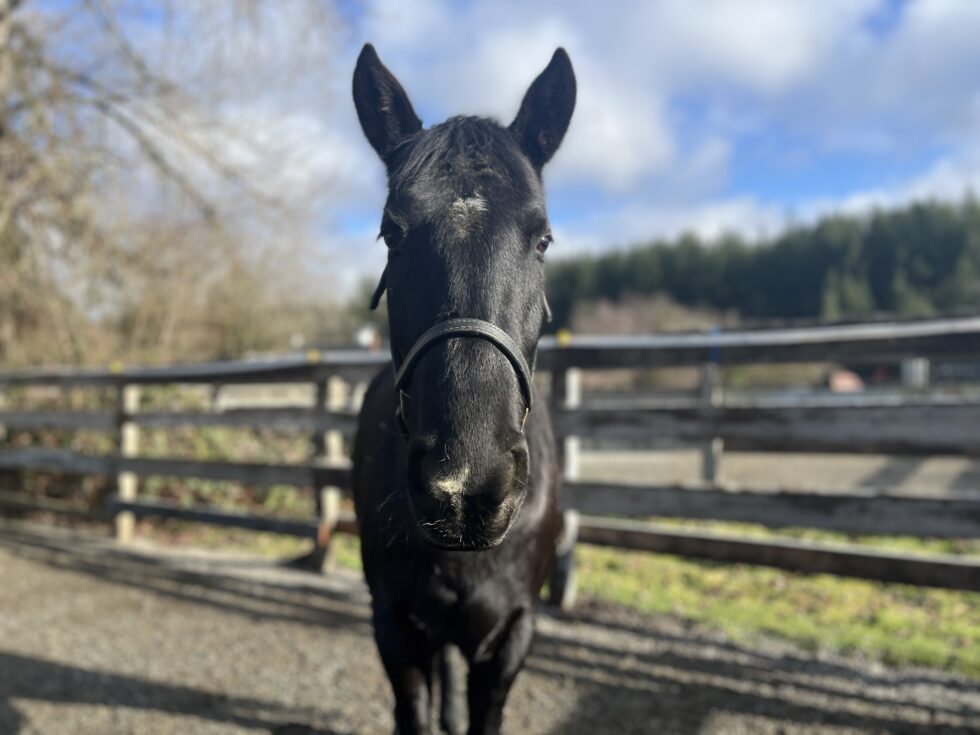
Getting to Know Poppy
Sweet little Poppy is the more timid of the two black pony cross mares, but it’s impossible to decide who is cuter.
Poppy can be difficult to catch, so she still has to wear a breakaway halter to make it easier for her to catch in the paddock, but we have been working on catch and release in the round pen with various people to get her more accustomed to multiple people approaching her and catching her up, and it has already made a huge difference in her willingness to be approached — the breakaway halter should soon be a thing of the past.
She is a nice little mover, and we have been working her through the Red Book progression with the intention of saddling her, as it is unlikely she has been saddled before. She will need a bit more time working through when aids like the flag or the rope mean something and when they don’t, but she is a fast learner. She is still nervous about the flag touching her, but has made great progress changing eyes on the rope and giving to pressure.
Poppy is nearly up to date on vet and farrier care. She has a dental float scheduled, where she will also get a microchip and a teat cleaning. She is up to date on her vaccines. She was also dewormed upon arrival, as she arrived with a positive worm load. She is gentle about being groomed and having her feet handled – she has been trimmed twice since arriving at SAFE, with a 6 week trim schedule set going forward. She gets daily thrush treatments to help combat the thrush all the Graham horses arrived with.
She is currently turned out with her near twin, Moshi. The two enjoy sun bathing together and chats with their next door neighbor, Picasso.
Poppy’s Friends:
1. George & Donna G.
2. Bear C.
3. Julia P.
4. Ellen H.
5. Kate & Julia L.
6. ____________________
7. ____________________
8. ____________________
9. ____________________
10._____________________
Every horse deserves at least ten friends! Even a small monthly donation can make a difference.

